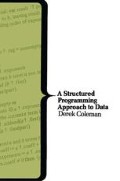Abstract
Dijkstra (1973) has remarked that to the processing unit of a computer, the sequence of millions of program instructions it performs in a short period of time is extremely monotonous: it just performs instructions one after the other. He proceeds to explain that if we dare to interpret the whole happening as meaningful, it is only because we have mentally grouped sequences of instructions in such a way, that we can distinguish a structure in the whole happening. In other words we can say the structure of an object is really how an observer (processor) relates to that object; to give meaning to an amorphous sequence of instructions or data, the rules governing its structure have to be known. In the case of data, it is type that defines and expresses structure.
Preview
Unable to display preview. Download preview PDF.
Author information
Authors and Affiliations
Copyright information
© 1978 Derek Coleman
About this chapter
Cite this chapter
Coleman, D. (1978). Designing Programs from Data Structures. In: A Structured Programming Approach to Data. Macmillan Computer Science Series. Palgrave, London. https://doi.org/10.1007/978-1-349-15981-9_14
Download citation
DOI: https://doi.org/10.1007/978-1-349-15981-9_14
Publisher Name: Palgrave, London
Print ISBN: 978-0-333-21943-0
Online ISBN: 978-1-349-15981-9
eBook Packages: Computer ScienceComputer Science (R0)

